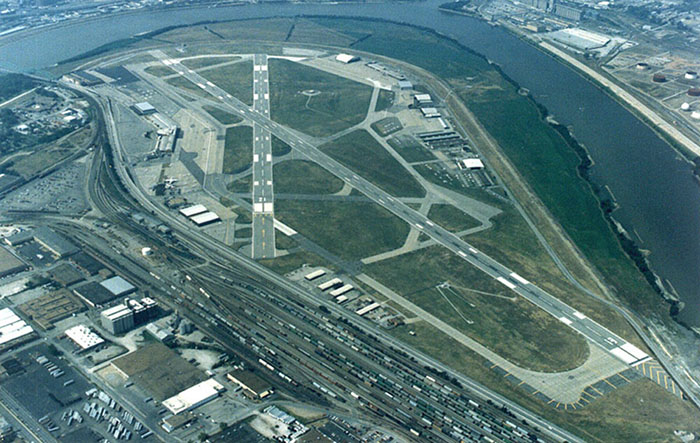Federal Services – Environmental
Posted on Wednesday, March 23rd, 2016 by Jason DavisIn Federal Services, tagged in Tags: airport, environmental, federal, restoration, streambank

Within the Federal Services team at Affinis, we have two, prior-service, military members, Ryan Stobaugh (8 years Navy) and myself (22 years Army). Over the years, we’ve tackled a number of projects. In fact, some of the work we complete under the federal services umbrella is even outside the federal realm. For example, projects performed for Kansas City, Missouri at the Downtown Airport require review and coordination with the U.S. Army Corps of Engineers (USACE). Work is technically for a non-federal client; however, a large portion of it is meeting USACE requirements.
Below, we’ve included descriptions, funding information, and requirements of a few of the environmental services we offer.
Section 1135 Ecosystem Restoration Projects.
Section 1135 of the Water Resources Development Act of 1986, as amended, provides authority for the Corps of Engineers to determine the need for project modifications in the structures and operations of Corps of Engineers projects for improving the environment in the public interest. In a nutshell, USACE can assist in the restoration of degraded ecosystems through the modification of Corps of Engineers’ structures, operations, or implementation of measures in affected areas.
When it comes to funding, there are a number of regulations.
- The initial study is 100 percent federally funded up to $100,000. All planning costs after the first $100,000 are shared 50/50 with the local sponsor.
- All design and construction costs are shared 75 percent with Federal and 25 percent non-Federal. The Federal cost limit is $5,000,000. In contrast, the non-Federal sponsor cost share can be a contribution of cash, lands, easements, rights-of-way, relocations, disposal areas (LERRDs), or work-in-kind. Work-in-kind may be provided subsequent to the execution of a Project Partnership Agreement (PPA), and the value may not exceed 80 percent of the non-Federal share.
Section 14 Streambank Stabilization Projects.
Section 14 of the 1946 Flood Control Act, as amended, provides authority for the Corps of Engineers to plan and construct emergency streambank and shoreline protection projects to protect endangered highways; highway bridge approaches; public facilities, such as water and sewer lines; churches; public and private nonprofit schools and hospitals; and other nonprofit public facilities.
A Section 14 project may include new streambank or shoreline protection works, or it may repair, restore, or modify existing works. Each project must constitute a complete solution to the problem and not commit the federal government to additional improvements to ensure effective protection.
A project is accepted for construction only after investigation shows its engineering feasibility, environmental acceptability, and economic justification. The planning and design analysis (PDA), which is conducted at federal expense, will evaluate the alternatives, select one, and develop project design data, including plans and specifications. The impact of the project on the environment will be documented in an environmental assessment (EA). The decision to approve and construct a project under Section 14 is based on information from the PDA. A draft project cooperation agreement (PCA) is drawn up which defines the obligations of the federal government and the sponsor in the construction, maintenance, and cost sharing of the project. No more than 12 months should pass between the start of the PDA and the time the project is ready for construction.
Next week, stop by the blog to see the second installment of our federal services series. It will cover levees. To learn more about our federal services, contact us at info@affinis.us.